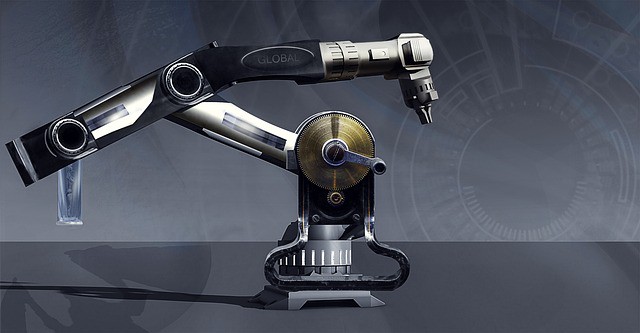Robots have been a part of industrial production since the

Control of a production line
A production line is usually controlled manually by a supervisor tasked with regulating things such as the speed of the robot or the direction in which it is moving. This is usually done by the use of buttons or a manual joystick. Configuration and reconfiguration of robots are easy. They can be reset to do many diverse tasks, making them really valuable to manufacturing companies that produce different products.
The business aspect
Business-wise, robots have a higher Return On Investment (ROI) along the production line as they require minimal maintenance and low supervision compared to humans. This makes them the ideal investment for manufacturers who have to produce items in bulk because the cost of production automatically goes low. Faster production ensures speedy delivery of goods to customers, and this attracts more traffic towards the business. This means that a business is more likely to experience increased customer growth after incorporating robots in its assembly lines.
Reduction of waste
Due to its accuracy, a robot reduces waste significantly on an automated production line, thus boosting profits. When work on a production line is not done accurately, a lot of product is wasted, which generally contributes to the outcome. The profits either being maximum or average. Production lines that have incorporated automation also benefit from improved work quality and reliability. The accurate nature of robots enables them to repeat a process repeatedly while still maintaining high-quality standards.
Automation also reduces human footprint since robots save up floor space, which helps in maximum utilization of the workspace. Because of this, companies can be able to reduce their rental costs.
Challenges of production line automation
For starters, the initial capital investment for robotic automation in a production line is huge, and most businesses may find it expensive. Training employees to adopt the new equipment may take time and can bear a financial toll on a company aiming to automate its production line using robots.
Secondly, the Return on Investment of a company can be affected if it does not realize the profits that were expected from purchasing robots. As a matter of fact, if the money earned does not match and goes beyond what was spent, the company might end up operating at a loss.
Lastly, system malfunctions are a possibility with robotic automation. When they happen, it could result in a lag in production or even a complete halt of the production process, resulting in losses. On the other hand, fixing the problem can also be another financial hurdle because they tend to be costly.
Automation versus human workforce
Generally, automation leads to loss of employment along production lines as robots replace humans. And even though automation signifies growth in a manufacturing company, it also has economic and social impacts on communities relying on employment opportunities. In addition, some products may require the human touch for one reason or the other, but this cannot be done by robots regardless of how advanced they are.
Furthermore, Robots along production lines cannot deal with unexpected occurrences as they are only programmed to perform specific tasks. Even if the robot has Artificial Intelligence, it will never have the ability to generate its own thoughts the way a human can.
Ultimately, however, industrial automation is very advantageous to a production line when approached objectively. And when all is said and done, the pros outweigh the cons.





